Famous all around the world, Jaipur’s Blue Pottery is a craft of sheer magnificence. Even though acknowledged as a conventional craft of the Pink City, Blue Pottery is Turko-Persian by origin and has gone through a long journey before getting its existing identity.
Be it about redefining the interior of your house or gifting yourself a souvenir, you have got it all covered under the umbrella of Blue Pottery. The basics are well-known to all but let’s have a closer look at what lies behind this beautiful blue art.
The journey from the east to India
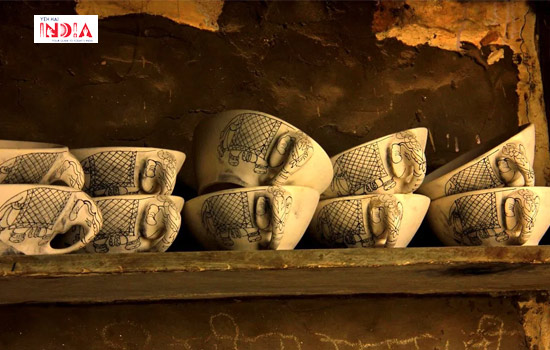
The uniqueness of this art is the blue glaze used on the pottery. This technique was essentially developed by the Mongol Artisans who efficiently brought together the Persian ornamental art and Chinese glazing technology to create what we adore today.
The art progressed from the east to India during the Turkic conquests in the 14th Century. At that time the blue glaze was mostly used to create tiles to decorate mosques and tombs. Later on, the Mughals began using them in India . This art form spread its wings from the plains of Delhi to Jaipur in the 17th Century. The glazing technique gradually grew beyond the creation of an architectural accessory to that of Blue Pottery.
Recommended Story – Know everything about Rangoli!
Prominence and Modern uses
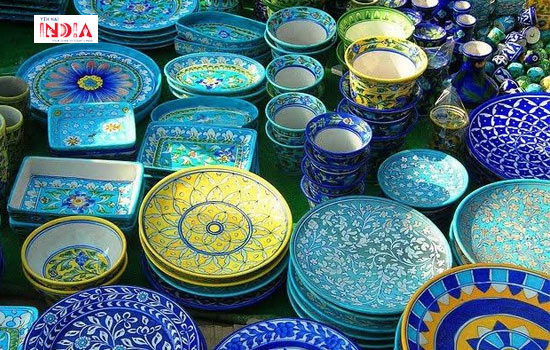
Beginning with architectural stuff like tiles, Blue Pottery items have spread to almost every field of use. You can use them to decorate your house or even office.
From vases to brighten up the room corners to doorknobs and wall-hooks, the materials can blaze up spaces with their glazed up designs. The home decor products include the ceramic plates, ashtrays, table as well as hanging lamps, showpieces like animals sculptures, cardholders etc, are all available in different sets of designs and patterns.
Apart from decorative items, the industry now includes jewellery to give you the authentic Jaipuri touch to your attire.
Jaipur Blue Pottery gained so much prominence that people these days love giving their interiors a whole theme of Blue Pottery as it furnishes a royal look. Blue Pottery products give vibrant vibes which an auxiliary benefit of this art. form.
You would always feel ecstatic bliss, serenity and a hint of royal ambience with objects of Blue Pottery and painting around.
The Formation and Fabrication
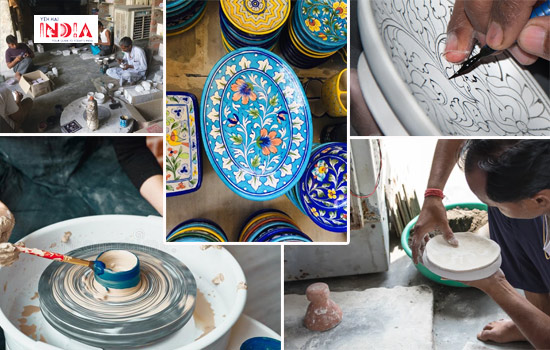
The name “Blue Pottery” originates from the awe-inspiring cobalt blue dye used to colour the pottery.
The admix of turquoise and cobalt colour palette forms the dominant colour. The blue shade is derived from the cobalt oxide, green from the copper oxide and colours like yellow and green from non-conventional methods.
1. The no-clay feature
Another element which differentiates the Jaipur Blue Pottery from all other types of pottery is the use of raw materials utilised in its modelling.
Rather than the typical method of using clay, the pulp for the pottery is formed by combining ground glass, quartz powder, soda bicarbonate, borax, gum, Fullers Earth (Multani mitti) and water.
2. The primary process
What you get to buy and own in the end goes through a long tedious process and artisans work hard to create the best end-product for you.
The paste is shaped like a smooth pancake with a traditional wooden tool called ‘thepai’.
Just like other potteries, the edges are embellished with knife and ash is filled within to prevent any kind of deformation. Once the mould gets hard, the item is softened by using sandpaper.
The items are finally made by high-glazing and low-firing. This process of firing them at low temperature is what makes them fragile. The mixture of white flour, glass and ground quartz is coated over the pottery and is left to get dry.
3. Designs and the end product
The designs are outlined and coated with a solution of gum and cobalt oxide. Next step includes the colouring part where the artisans paint animals, birds and leaf motifs by delicate squirrel brushes.
The decorations nowadays also include geometric patterns and other personalised idealistic designs which are innovative in comparison to old designs.
The whole process in total takes around 15 to 20 days. These potteries are not limited to a single type and are sometimes semi-transparent as well. There are multiple designs and patterns and each one astonishes with its beauty.
Recommended Story – Top 10 Contemporary Painters of India You Need to Know
From the edge of extinction to rebirth
Even though the art was beautiful and had associations with the royal family, Jaipur Blue Pottery almost lost its existence with time and was on the verge of extinction. The primary reason was the denial by head artisans to share the technique and ideas with other craftsmen.
Kripa Singh Shekhawat, a Muralist and Painter along with his patrons came together and made the required efforts to revive the art.
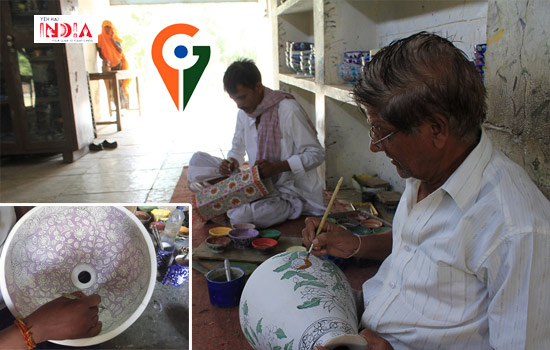
The Blue Pottery of Jaipur is once again a booming industry and provides employment to many artisans .
It is now one of the many elements that symbolise Jaipur and was given a ‘Geographical Indication’ status in India. GI is the sign used on the products with a regional foundation and can be portrayed by its label.
Jaipur Blue Pottery has indeed come a long way and is of traditional eminence to the country. You can always share your love and dedicate your part of appreciation by owning these beautifully exceptional items as special souvenirs, made by India’s top-notch artisans.
Also Read – Love Embroideries? Checkout the 14 Exquisite Embroideries of India


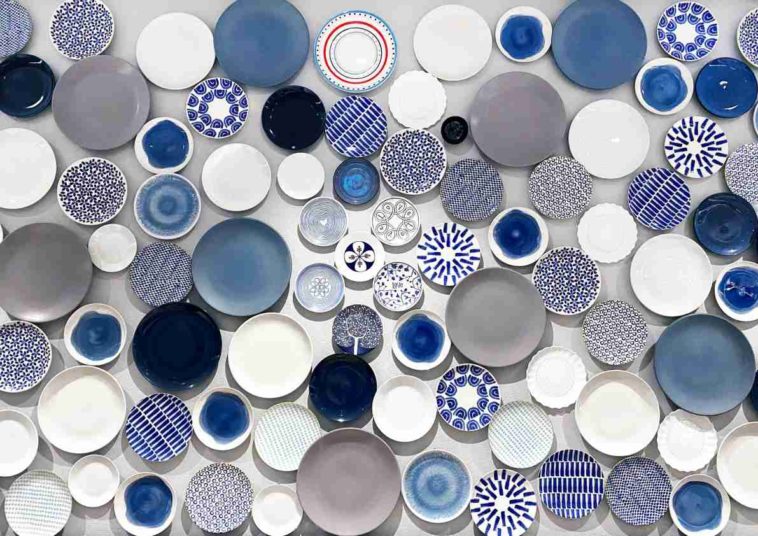








B’ful writer